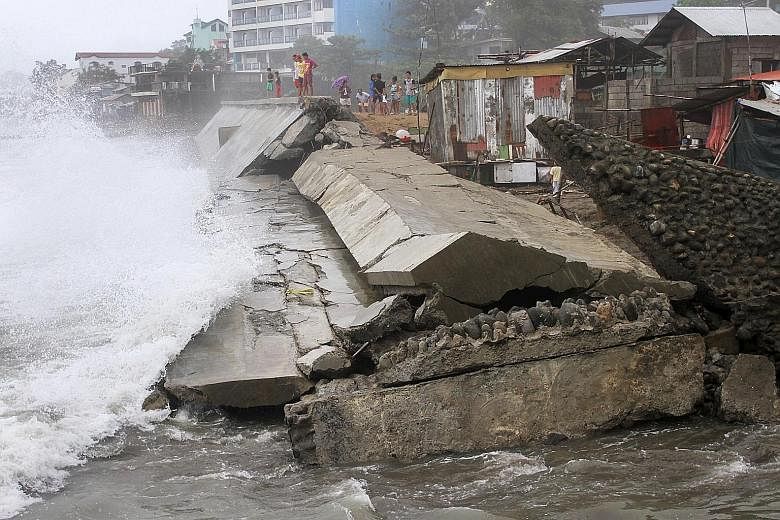At least 14 people died as Typhoon Koppu pummelled the northern Philippines for a second day, dumping heavy rain and causing widespread flooding in at least five provinces.
The national disaster council yesterday confirmed three casualties.
One of them - 14-year-old Aaron Esperanza - died when a tree fell on the family's shack in Quezon City, metropolitan Manila's most populated district.
A radio station reported that his 49-year-old mother Esperanza died later at a hospital, but her death had yet to be officially tallied.
In Zambales province, three hours north of Manila, Mrs Benita Famanilay, 62, was crushed when a wall of her house collapsed.
A third unidentified victim on the national disaster council's list died during a landslide in Benguet province farther north.
Officials said the official death toll could still rise, as there were scattered reports of casualties in other areas.
Village officials in Aurora province, 280km north-east of Manila, reported three deaths in Dinalupihan and Casiguran towns.
Seven others died when their outrigger canoe capsized in rough waters around Iloilo province, south of the capital Manila, according to coast guard officials.
Rescuers reported five people being swept away by a river in Nueva Ecija province and three fishermen missing off the coast of Bataan province, both in central Luzon.
The Philippine Daily Inquirer said late yesterday that two men were buried in mud in Zambales province.
Still, Koppu has so far claimed relatively few lives, partly because it directly passed through sparsely populated mountain and coastal ranges.
Officials also credited the early evacuation of thousands - in towns prone to flash floods and landslides, and coastal villages at risk from destructive storm surges - for the low toll.
In November 2013, Super Typhoon Haiyan, one of the most ferocious storms on record to hit land, barrelled through central Philippines, levelling entire towns and leaving more than 7,300 dead or missing.
The slow-moving Koppu - the 12th storm to hit the Philippines this year - made landfall past 1am on Sunday, with gusts of up to 240kmh. It weakened as it tore across northern Philippines, but it continued to dump heavy rain.
Rivers burst their banks, inundating some 70 villages in Pangasinan, Isabela, Tarlac, La Union and Nueva Ecija.
The situation was especially severe in the rice-growing province of Nueva Ecija, 100km north of Manila, where hundreds of residents in several low-lying villages were forced to climb onto their rooftops to escape the fast-rising water.
Thousands more fled to higher ground or sought shelter in evacuation centres.
Two Nueva Ecija towns - Jaen and San Isidro - were placed under a "state of calamity".
Jaen Mayor Santi Austria said 95 per cent of his town was now under at least knee-deep water. "What happened to us was sad... We were hit by the wind for about six to seven hours," he said.
According to the Social Welfare Ministry, Koppu displaced over 200,000 in the main Luzon island, home to nearly half the nation's population of 100 million.
Nearly 70,000 people were evacuated to 370 shelters, it added.
Koppu was spotted treading the northern Ilocos region as it headed north towards Taiwan.

